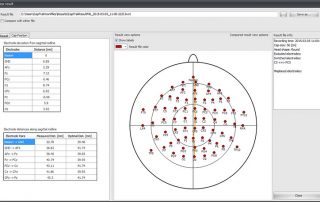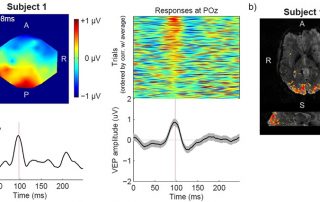Brain Products Press Release
March 2015
New CapTrak software version 1.1.0 supports actiCHamp systems
Brain Products is happy to announce a new version of the CapTrak electrode localization system (to be released in mid-April 2015), which interfaces directly with one of our company’s flagships: the actiCHamp EEG recording system. The new CapTrak software allows not only to localize the electrode positions in an extremely easy, accurate and fast way. It also helps to figure out if the cap has been misplaced in consequent measurements or if the cap size does not fit your subject!
Simultaneous EEG–fMRI at ultra-high field: Artifact prevention and safety assessment
Simultaneous EEG-fMRI acquisitions can offer valuable insights for the non-invasive study of human brain function. Concurrently, the benefits offered by high-field imaging have attracted considerable interest towards simultaneous EEG-fMRI at higher field strengths. Unfortunately, simultaneous acquisitions are subject to problematic interactions that can compromise data quality and subject safety. Reducing noise during acquisition is crucial to improve EEG data quality, especially at higher fields. In this article, we assessed the importance of EEG cable length and geometry on noise sensitivity, at 7T, at the level of transmission between the cap and amplifiers.
Tricks and tips in BrainVision Analyzer 2 – Part II
Tricks and tips are always much appreciated by our users, so we decided to compile a few more suggestions which will facilitate your data analysis with BrainVision Analyzer 2.
actiCHamp revision 3.0 now with clock output for synchronization with tAC, tDC and tRN stimulators
Removing artifacts induced by tDC, tAC, tRN stimulators from EEG signals is a tricky and challenging task. However, it is a key prerequisite for EEG signal analysis. Artifact-corrected EEG data will lead to improved scientific conclusions on the effects of the stimulation that has been applied.
Recording EOG signals with actiCHamp – active or passive electrodes?
The artifacts produced by eye movements and blinks are problematic for the EEG researcher and can have a negative impact on results. Advanced algorithms (e.g. Ocular Correction ICA) can be very effective in correcting the ocular related artifacts, however in some cases a dedicated ocular channel is required. Here, we will describe various approaches on how to use an actiCHamp amplifier to record an Electrooculogram (EOG).
BCI-controlled “drone-tennis” demonstrated by Team PhyPA (German Television @ TV total)
“And now: A world premier…” was the announcement made by Stefan Raab, the host of the German late night show “TV total”, as members of Team PhyPA, our group of Brain-Computer Interface (BCI) research from the Department of Biological Psychology and Neuroergonomics at Berlin Institute of Technology, entered the stage.
Brain Products bidding farewell to David Kadlec (Technical Support)
In January this year, Brain Products bid a bittersweet farewell to David Kadlec, who joined Brain Products’ US-based distributor Brain Vision LLC in order to take on new challenges in customer support.




